Witches’ butter is one of these alluring beauties, calling to foragers with a siren’s song of sticky flesh and gelatinous creases. Who could resist?
You’ll have to find some before you can chow down. Read on to learn how to identify witches’ butter in the field and discover the myriad forms this mushroom may take.
Witches’ Butter Quick ID Checklist
There’s more to witches’ butter than meets the eye, and making a positive ID instantly can be difficult. However, you’ll stay on the right track by learning to recognize the following:
- Yellow, orange, brown, black, purplish, or white fruits
- Distinct ridges or brain-like structure
- Conjoined or individual fruiting bodies
- Gelatinous, soft, yielding flesh
- Grows or appears to grow directly from wood
How to Identify Witches’ Butter
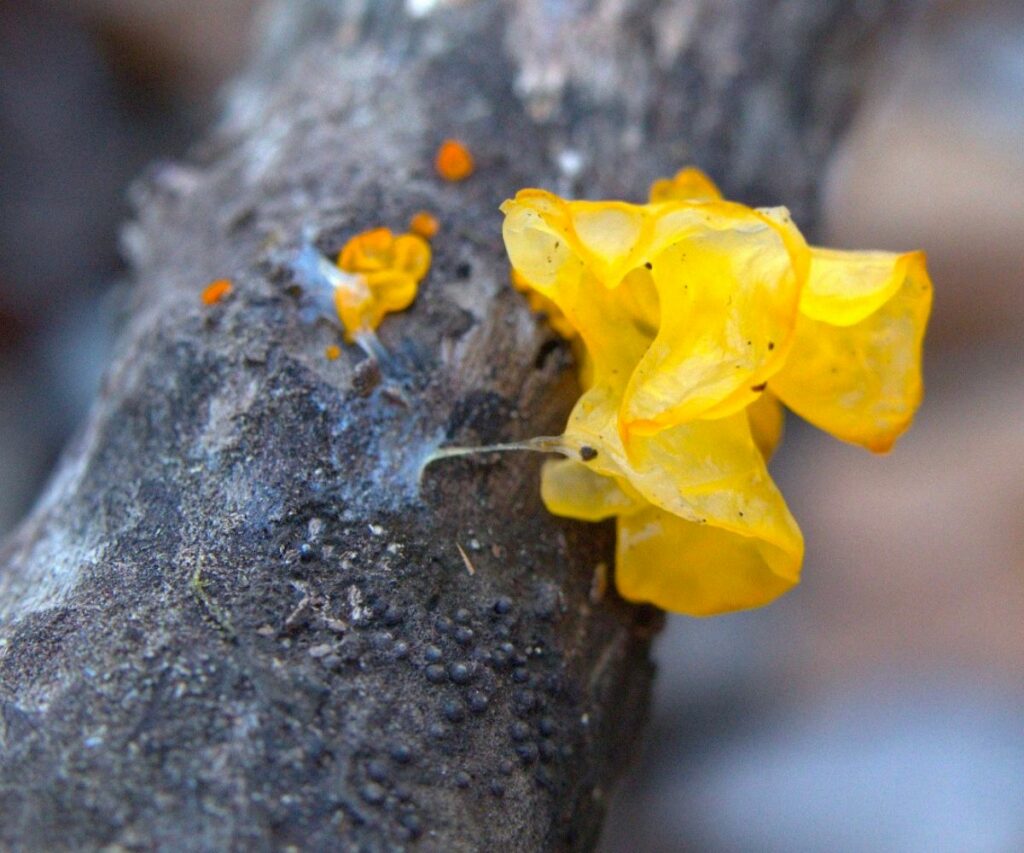
Also known as “jelly roll” or “brain fungus,” witches’ butter is an adorable blob of a mushroom that deserves far more attention than it gets.
While most eschew it in favor of the more popular fungi available during the high season, it provides a wonderful reprieve from the barren landscape of winter — and it’s actually quite tasty if you know how to prepare it.
Foragers differ (sometimes quite vigorously) on what species qualify as witches’ butter. It’s a phenomenon much like the puffball mushroom, a collection of several edible species that all happen to look and taste alike.
In this guide, I’m including all fungi you might hear called witches’ butter.
Remember, some of these fungi may have additional or alternative nicknames in your area. However, being as broad as possible is essential to avoid leaving anyout of the equation.
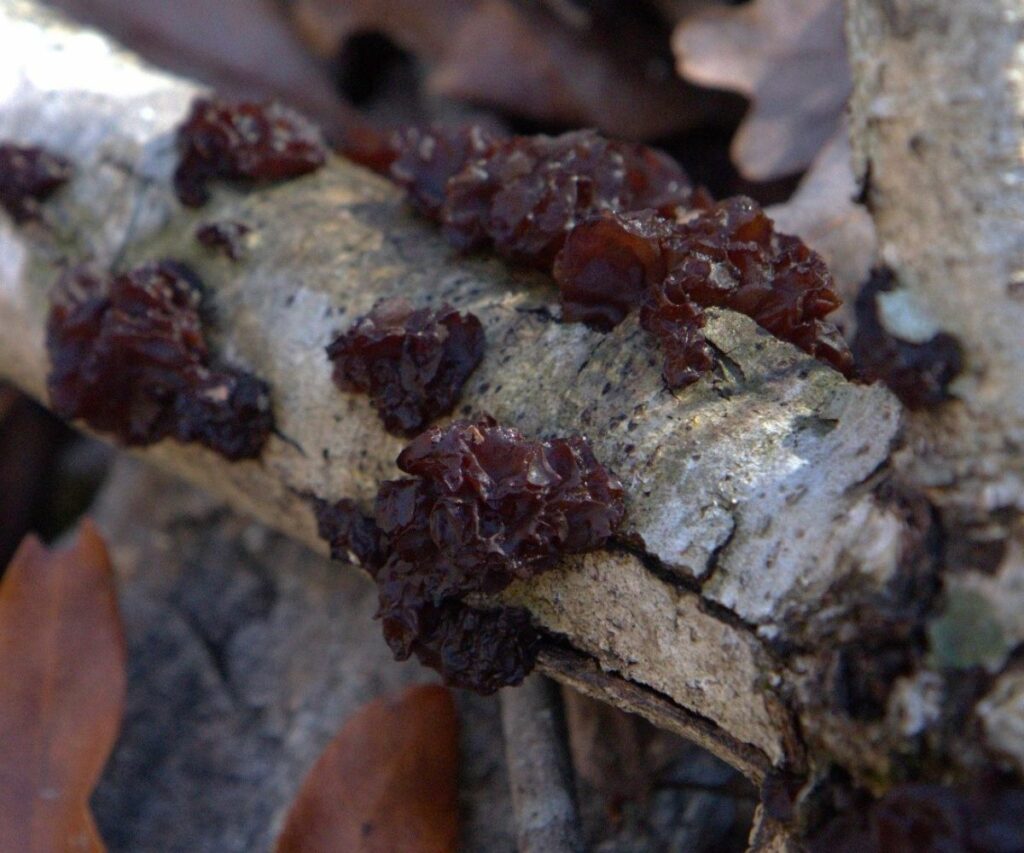
Appearance
Most people agree that there are at least two types of witches’ butter: brown and yellow. Some add black, white, and orange to the mix.
This translates to a host of different species and families, but all have a distinctly mucilaginous appearance with malleable, jellied bodies. None have distinct caps, stems, or pore surfaces.
These fungi may fruit in hot or cold weather, even when surrounded by snow. They deliver a delightful burst of color and a nourishing snack when roughage is scarce — but you’ll have to hunt your heart out.
These little blobs rarely reach more than two or three inches across, and some are much smaller at mere centimeters. However, lucky foragers might find clustered patches that stretch a foot or more.
- Color: May be dark to light brown, yellow, orange, or white, with some species appearing black. All species appear darker when dried than fresh.
- Flesh: Matte when dry and glossy when fresh or after a rain. The flesh colors inside match the outside color but may have more or less shine depending on conditions.
- Shape: Irregular and lobed to blobby. Fruiting bodies may remain separate or conjoined on the branch to form a larger structure. Shapes may explode with encephaloid contortions, feature geometric edges, or appear as small globules of flesh.
- Pore surface: No distinct pore surface is visible. Sometimes, mycelial strands are visible where the fungus attaches to its substrate.
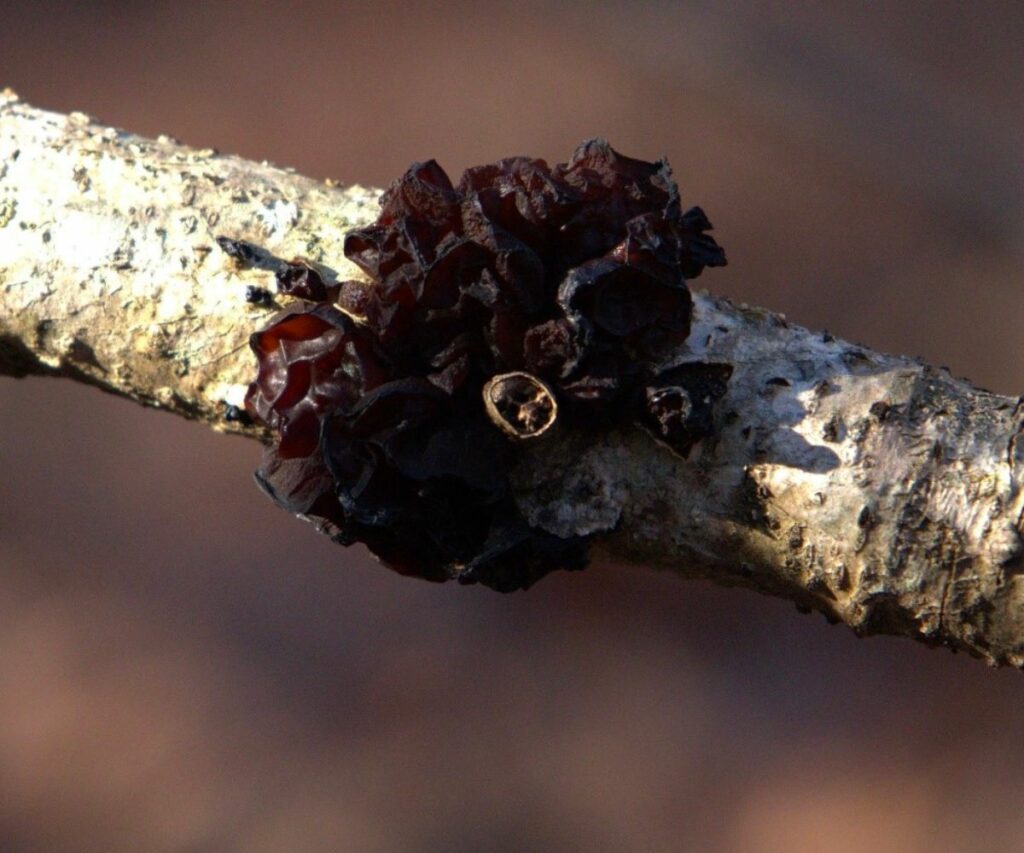
Species
Witches’ butter encompasses many species. For identification in the field, I’ll review common varieties that vary by shape and color.
Know that any of the below species might have cousins and siblings. A positive ID is difficult without a microscope, but this isn’t important for foraging. All are edible and medicinally useful.
Tremella mesenterica: Also called yellow witches’ butter, this fungus is easy to spot against dark, moss-colored branches of downed hardwood trees. Its shape is masses of brain-like folds that grow alone or close together but rarely combine. The texture is springy. Tremella aurantia is a common look-alike.
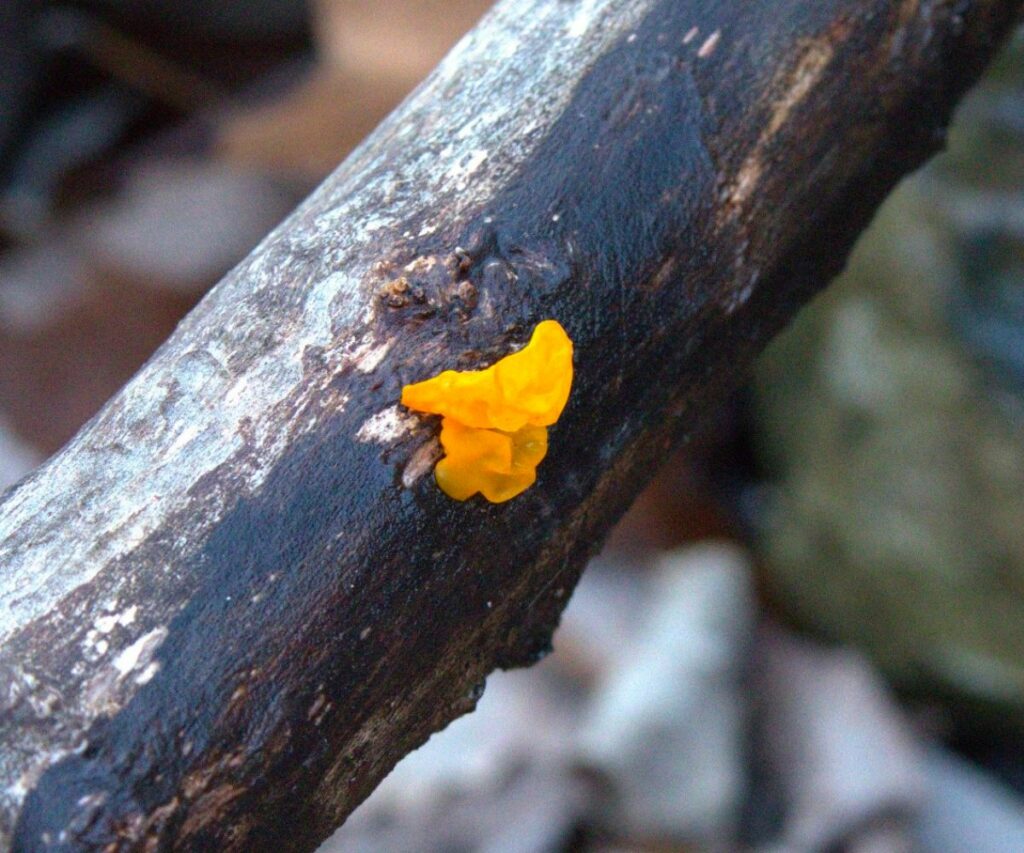
Dacrymyces chrysospermus: Also called orange witches’ butter, this fungus closely resembles T. mesenterica in shape but appears more orange. It prefers pine and hemlock to hardwood and may taper down to a point where it is attached to its substrate. Individual fruiting bodies often conjoin.
Exidia glandulosa: Also called black or brown witches’ butter, this fungus seeps ominously from the cracked branches of downed hardwood. Clusters grow close together, and bodies often conjoin to form a larger structure. Exidia nigricans is a common look-alike sometimes called warlocks’ butter.
Exidia recisa: Another brown witches’ butter, E. recisa is dark and can be purplish-black. It has a unique geometric shape featuring concave depressions surrounded by sharp ridges. Fruiting bodies may grow close together but do not tend to conjoin.
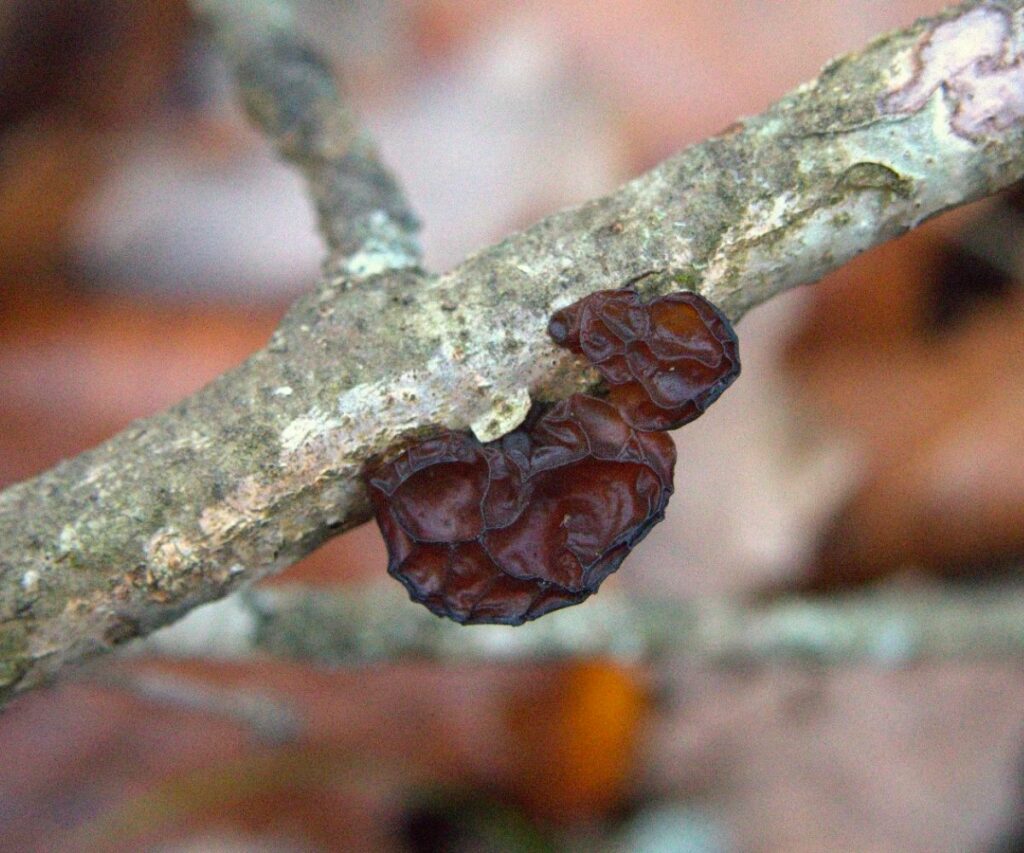
Exidia alba: Also known as white witches’ butter or Ductifera pululahuana, E. alba is common in the southeastern US but rarely fruits in winter. It has a blobby, brainy body and can be white, off-white, or dirty cream. Tremella fuciformis is similar but has slightly translucent flesh and smoother lobes.
Texture, Taste, and Smell
The texture of witches’ butter is gelatinous and gives quickly under pressure. It is fragile, breaking and tearing when pressure is applied to reveal a glistening, Jell-o-like interior. Some specimens are heartier and spring back when provoked; others fall apart immediately.
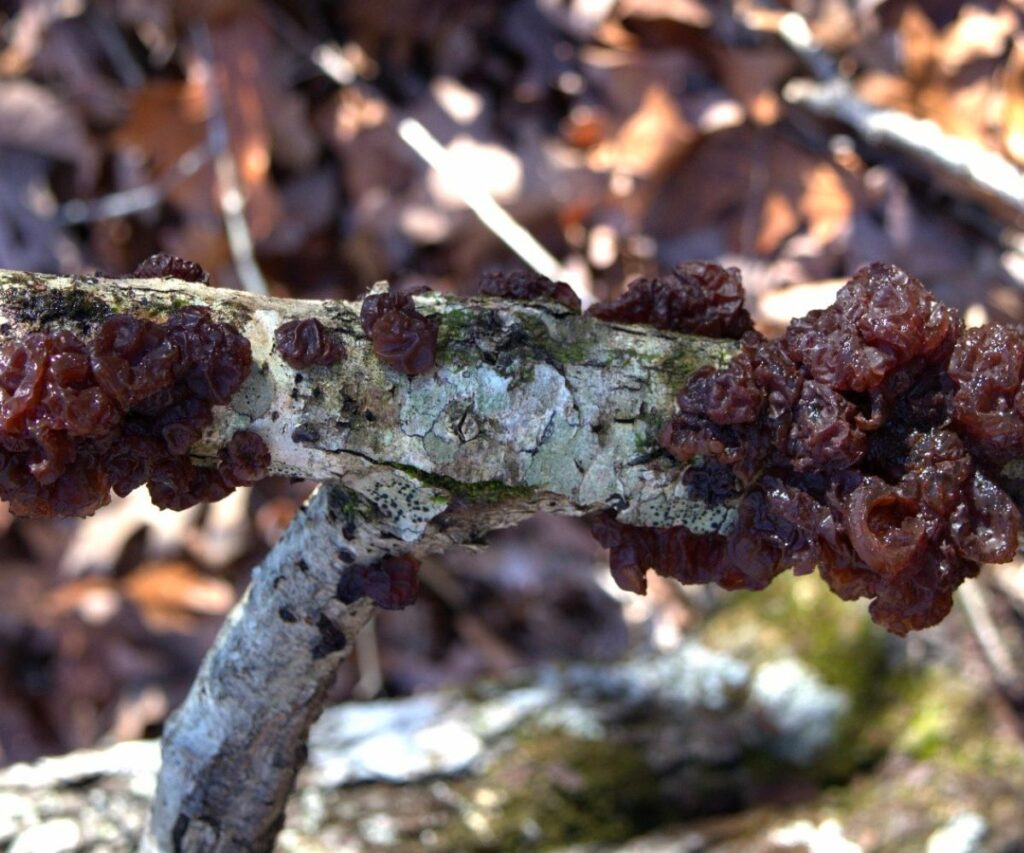
Witches’ butter is mostly water. If rain is lacking, it shrivels up a few days after fruiting. It doesn’t rot but dries out, which is great for the forager. You can harvest it anytime, and its quality will usually not be affected by age.
With no distinct taste or smell, witches’ butter is prized mainly for its medicinal benefits and exciting texture. You can dehydrate witches’ butter to almost nothing for easy storage. It rehydrates beautifully in soups and stews, adding an interesting, chewy consistency to the broth.
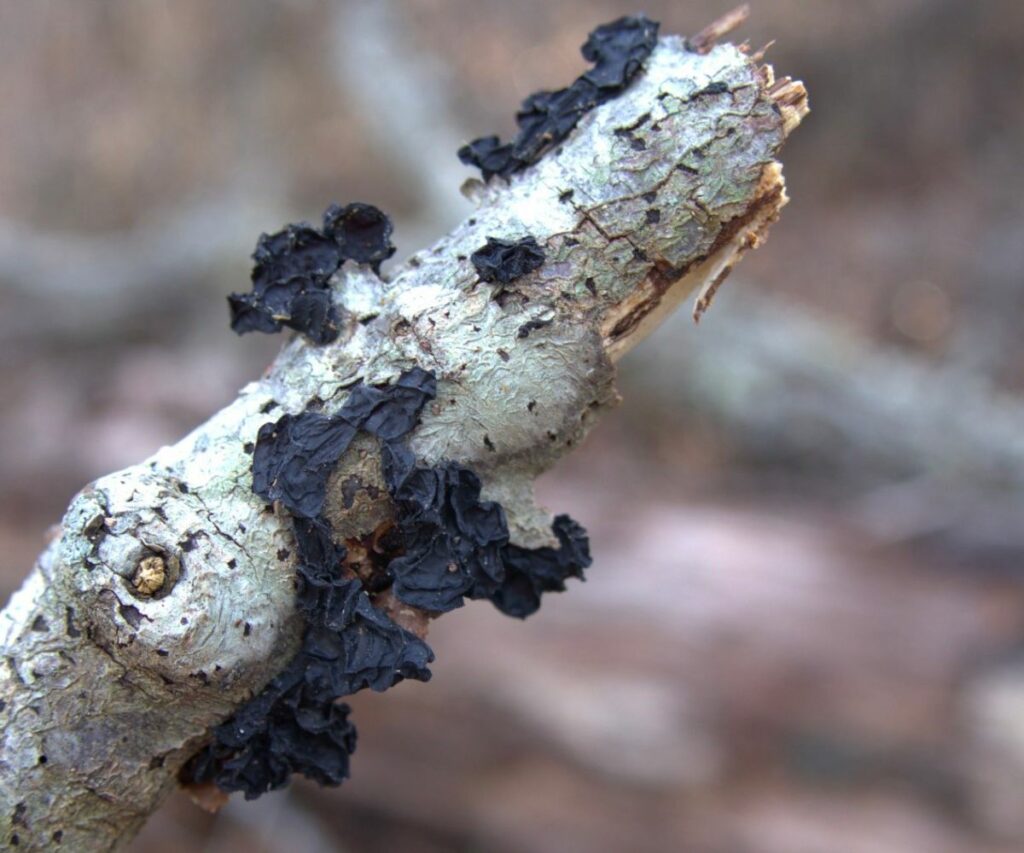
Fresh specimens might call to mind the rich folds of freshly churned butter, but this shrine was named for the folklore surrounding it rather than its texture.
While specifics vary by country, the general consensus in medieval Europe was that if you saw it growing on your house, a witch had placed a spell on you.
It was a pretty big deal back then. Nowadays, modern lumber treatments and wood-curing techniques will easily prevent a witches’ butter hex.
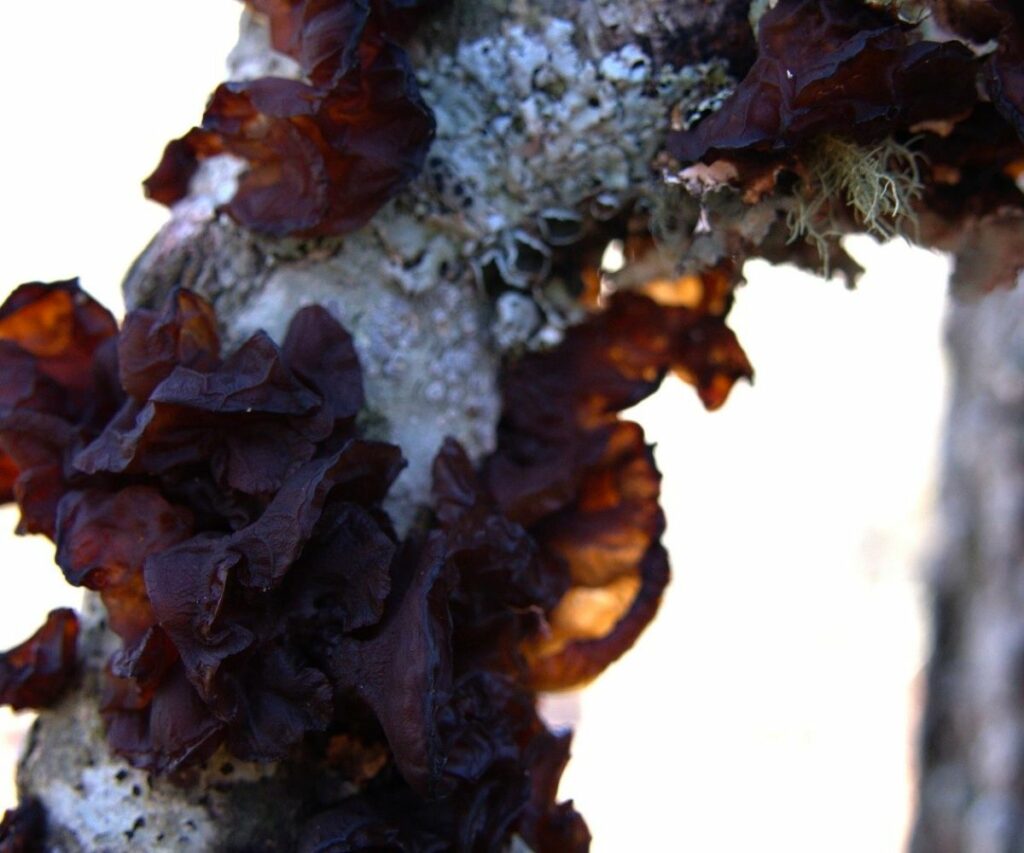
Habitat
Habitat varies slightly between species because they serve different ecological functions. Tremella is by far the most fascinating. Members of this genus are parasitic mushrooms that feed from crust fungi in the Peniophora genus.
Sometimes, remnants of the crust fungi can be seen beneath the yellow witches’ butter. Since Peniophora is saprobic, Tremella will always be found on the dead logs, trunks, and branches where it grows.
The Exidia are also saprotrophic and grow directly from dead sticks and branches. Rarely, you will see multiple types of Exidia species growing next to each other on the same branch.
Witches’ butter can grow in temperate and tropical zones in deciduous forests. With various species preferring different substrates, it can be found on nearly any type of wood.
Season and Growth Habits
No matter what time of year it is, you’ll find some variety of witches’ butter fruiting nearby.
It grows at any time and is particularly prolific after rain. It shrivels quickly in the heat and stays pristine with cooler, wetter weather, so fall, spring and winter are generally the best times to look.
Yellow, orange, and white types stand out like a sore thumb. However, brown and black witches’ butter can be difficult to see through the thick foliage of living trees that surround its preferred substrate. It becomes easier to spot when those leaves fall.
Yellow varieties can grow on large stumps and thick logs, but all witches’ butter species seem to prefer small, thin twigs and branches. Pay close attention to sticks lying along the trail since they often have a few fruiting bodies attached to them.
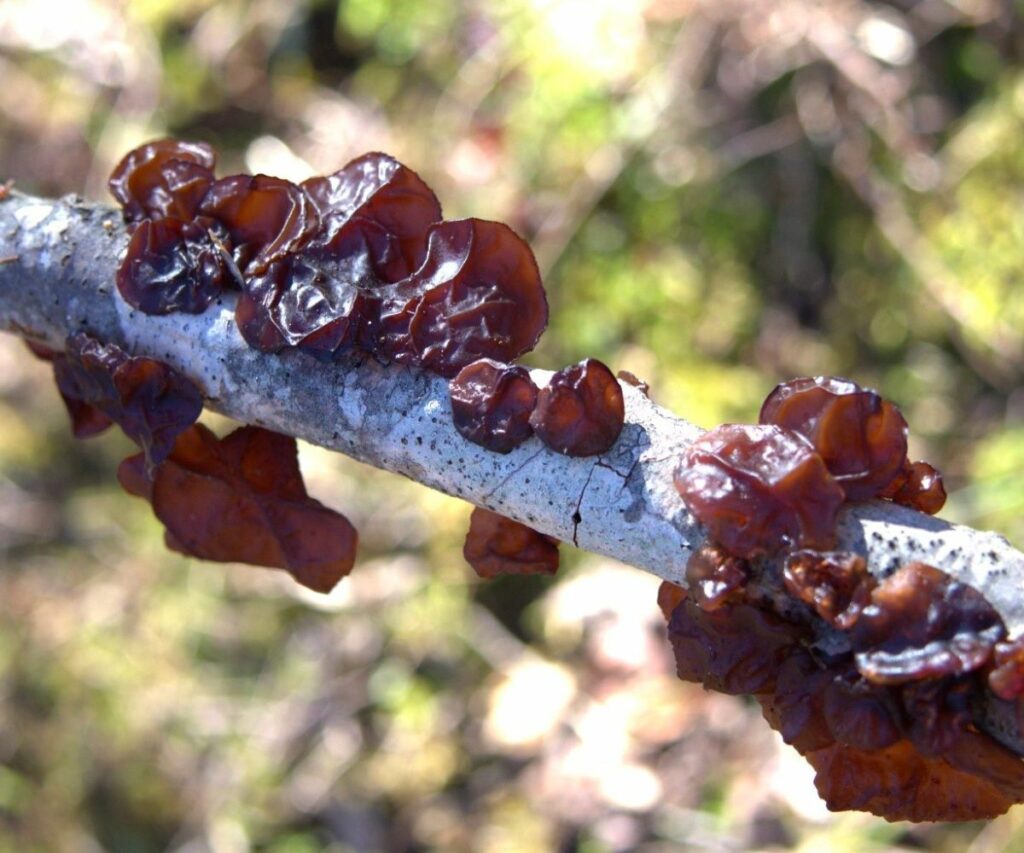
Do not discount specimens that have dried and shriveled. These rehydrate excellently and will grow to a shocking size when soaked in water or broth for cooking.
In fact, it’s sometimes easier to harvest and collect dried specimens since they’re light and take up far less space.
Distinguishing Common Look-Alikes
Witches’ butter is a safe mushroom to forage since it has no toxic doppelgangers. Most look-alikes are classified as yet another variety of witches’ butter.
Wood Ear
The common wood ear mushroom can easily be mistaken for brown witches’ butter, especially Exidia recisa. It is a saprobic decomposer jelly fungus growing in similar conditions throughout North America and Europe but has several distinguishing features.
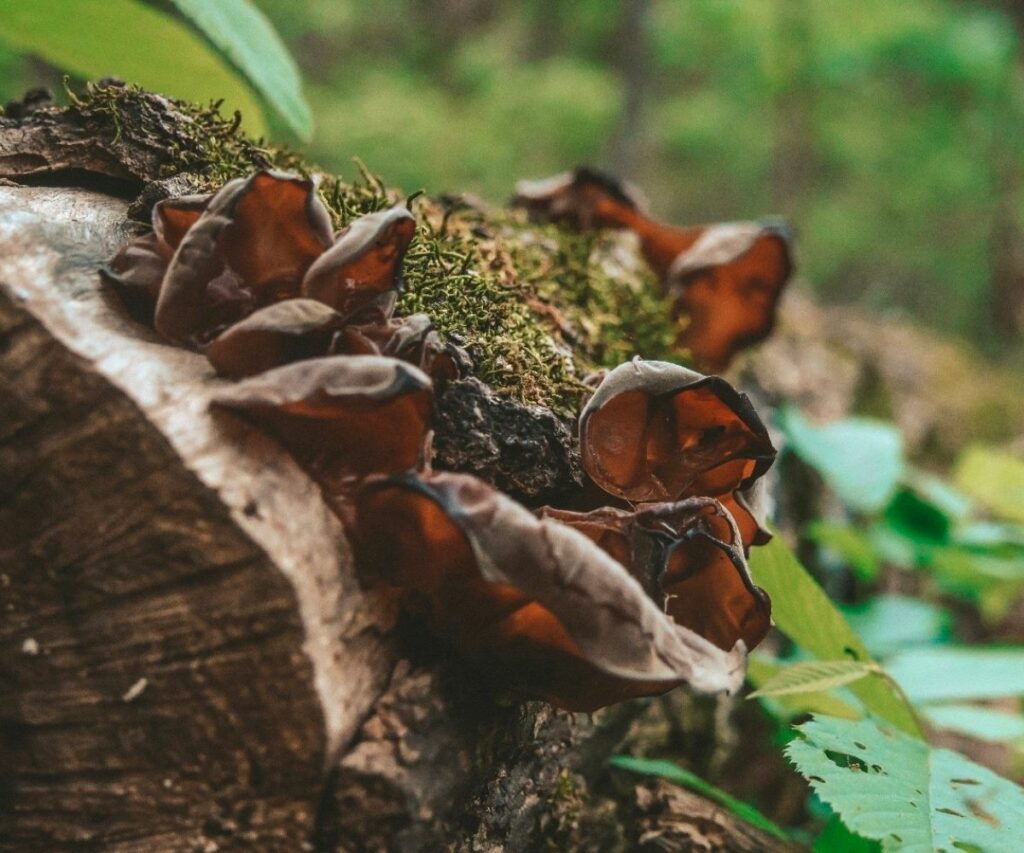
Wood ear fruiting bodies are distinct and retain their shape. You will never see them conjoining into a single mass. The shapes are ear-like with smooth margins and do not feature brainy folds.
Wood ear is always brown and never varies by color. While it does have a gelatinous look and feel, it is generally a more solid mushroom and does not tear or break as easily as witches’ butter.
Ready to get spooky? You need some witches’ butter in your life! Now that you know how to identify and forage this fantastic fungus, you can harvest and enjoy it anytime.

